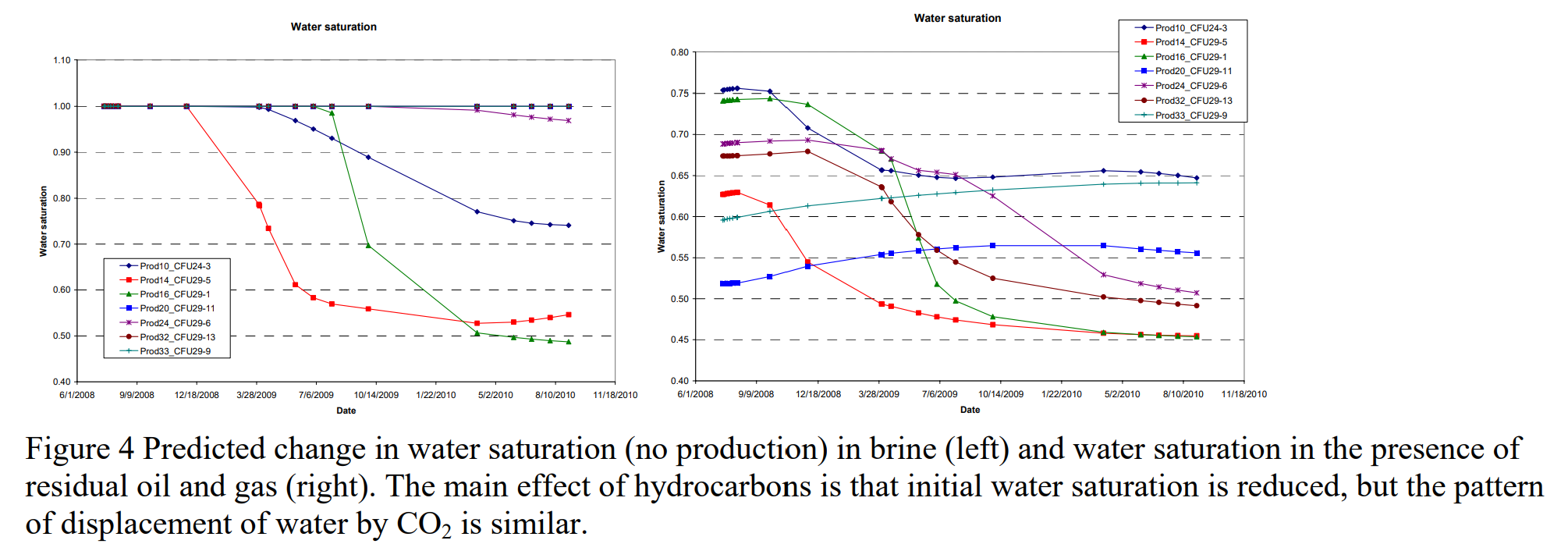Comparing carbon sequestration in an oil reservoir to sequestration in a brine formation – field study
Abstract
Geologic sequestration of CO2 in an oil reservoir is generally considered a different class than sequestration in formations which contain only brine. In this paper, the significance and validity of this conceptualization is examined by comparing the performance of CO2 injected into a depleted oil reservoir with the performance of similar injection into non-oil bearing sandstones using a field test at Cranfield Field, Mississippi as a case study. The differences considered are:
(1)Residual oil in the reservoir slightly reduces the CO2 breakthrough time and rate of pressure build up as compared to a reservoir containing only brine, because under miscible conditions, more CO2 dissolves into oil than in to brine.
(2)Dense wells provide improved assessment of the oil reservoir quality leading to improved prediction as well as verification of CO2 movement in this reservoir as compared to the sparsely characterized brine leg. The value of this information exceeds the risk of leakage.
Assessment of the difference made by the presence of residual oil requires a good understanding reservoir properties to predict oil and gas distribution. Stratal slicing, attribute analysis and petrographic analyses are used to define the reservoir architecture. Real-time pressure response at a dedicated observation well and episodic pressure mapping has been conducted in the reservoir under flood since mid-2008; comparison measurements are planned for 2009 in down-dip environments lacking hydrocarbons. Model results using GEM compositional simulator compare well in general to measured reservoir response under CO2 flood; imperfections in model match of flood history document uncertainties Time laps RST logging is underway to validate fluid composition and migration models. Monitoring assessing the performance of the wells during the injection of CO2 suggests that the value of wells to provide field data for characterization exceeds the risk of leakage.
Keywords:
Brine sequestration; depleted oil reservoir sequestration; real-time monitoring, compositional model history match



